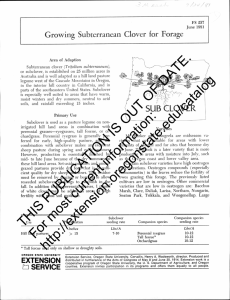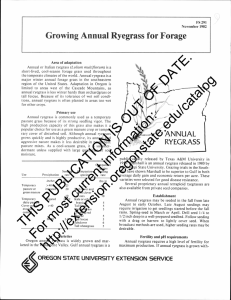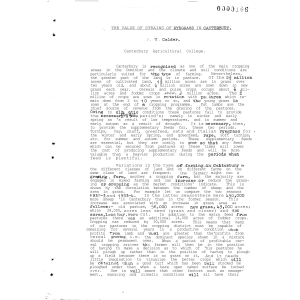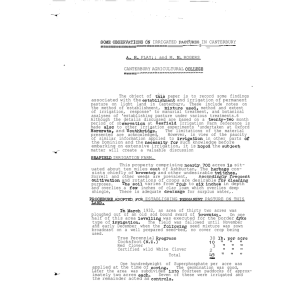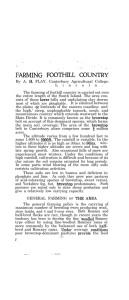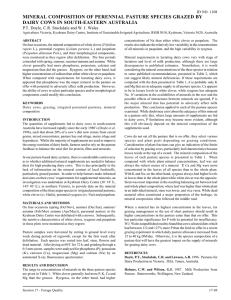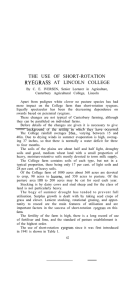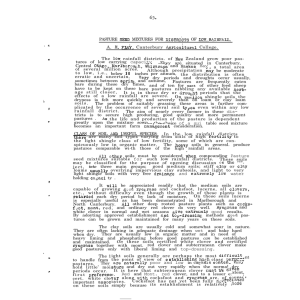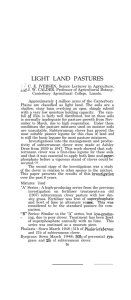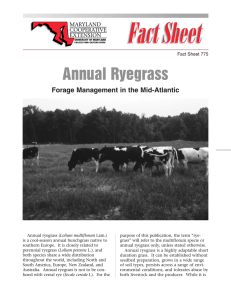Growing Perennial Ryegrass for Forage
advertisement
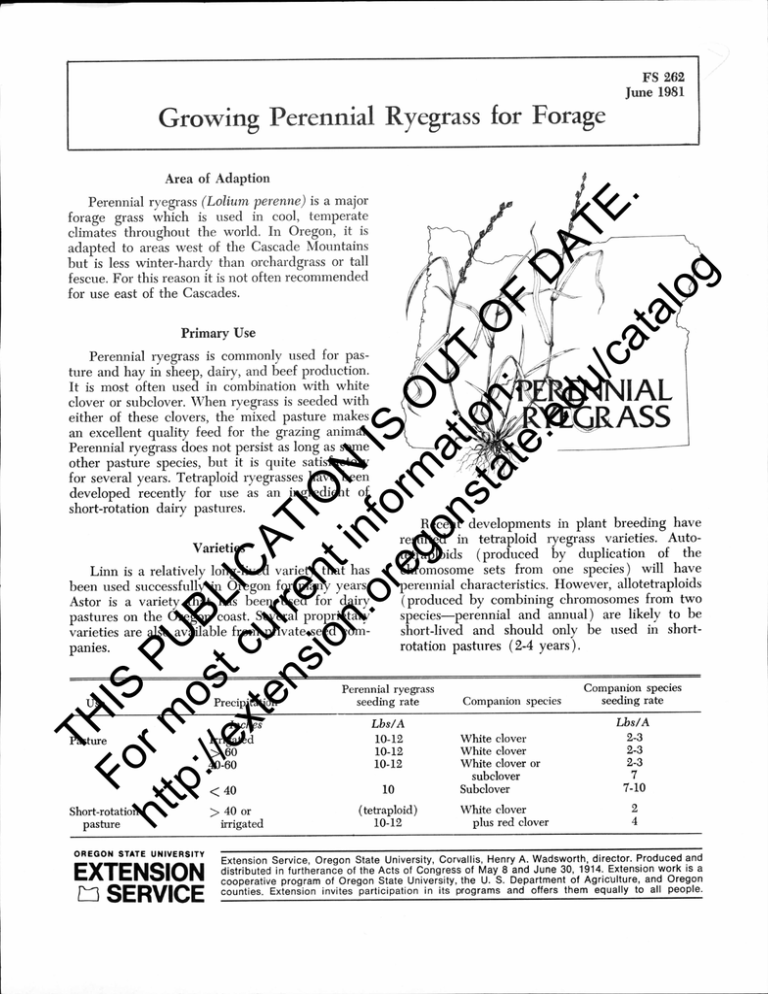
FS 262 June 1981 Growing Perennial Ryegrass for Forage Fo IS ht r m P U tp :// os BL ex t c IC te ur A ns re TI io nt ON n. in or fo IS eg rm O on at U st ion T O at : F e. D ed A u/ TE ca . ta lo g Area of Adaption Perennial ryegrass (Lolium perenne) is a major forage grass which is used in cool, temperate climates throughout the world. In Oregon, it is adapted to areas west of the Cascade Mountains but is less winter-hardy than orchardgrass or tall fescue. For this reason it is not often recommended for use east of the Cascades. Primary Use Perennial ryegrass is commonly used for pasture and hay in sheep, dairy, and beef production. It is most often used in combination with white clover or subclover. When ryegrass is seeded with either of these clovers, the mixed pasture makes an excellent quality feed for the grazing animal. Perennial ryegrass does not persist as long as some other pasture species, but it is quite satisfactory for several years. Tetraploid ryegrasses have been developed recently for use as an ingredient of short-rotation dairy pastures. Recent developments in plant breeding have resulted in tetraploid ryegrass varieties. Autotetraploids ( produced by duplication of the chromosome sets from one species ) will have perennial characteristics. However, allotetraploids ( produced by combining chromosomes from two Varieties Linn is a relatively long-lived variety that has been used successfully in Oregon for many years. Astor is a variety that has been used for dairy pastures on the Oregon coast. Several proprietary varieties are also available from private seed com- speciesperennial and annual) are likely to be short-lived and should only be used in short- panies. rotation pastures (2-4 years ). TH Use Pasture Short-rotation pasture OREGON STATE UNIVERSITY EXTENSION In SERVICE Precipitation Perennial ryegrass seeding rate 40-60 Lbs/ A 10-12 10-12 10-12 <40 10 Inches Irrigated > 60 > 40 or irrigated (tetraploid) 10-12 Companion species Companion species seeding rate Lbs/ A White clover White clover White clover or subclover Subclover White clover plus red clover 2-3 2-3 2-3 7 7-10 2 4 Extension Service, Oregon State University, Corvallis, Henry A. Wadsworth, director. Produced and distributed in furtherance of the Acts of Congress of May 8 and June 30, 1914. Extension work is a cooperative program of Oregon State University, the U. S. Department of Agriculture, and Oregon counties. Extension invites participation in its programs and offers them equally to all people. Establishment Perennial ryegrass may be fall seeded in areas with relatively mild winters. Seed should be planted in late summer before the fall rains begin. Spring seeding is possible where adequate mois- ture is available for seedlings to develop before the arrival of dry summer conditions. Seed should be planted to 3 inch deep in a well-prepared Management In order to obtain the highest quality forage, clover-grass pastures should be grazed between 2 and 6 inches high to prevent the grass from shading the clover. Pastures are often grazed early in the season, and some areas are reserved for hay when growth exceeds the demand. For highest quality, hay should be cut when the inflorescence is emerging from the leaf sheath and certainly Fo IS ht r m P U tp :// os BL ex t c IC te ur A ns re TI io nt ON n. in or fo IS eg rm O on at U st ion T O at : F e. D ed A u/ TE ca . ta lo g seedbed. Fertility and pH Requirements before flowers begin to shed pollen. Spring application of nitrogen will stimulate Perennial ryegrass requires high fertility levels for good production. If ryegrass is grown in com- favored by continued close grazing ( to 2 inches ), bination with a nitrogen-fixing legume, it will not be necessary to apply nitrogen, but ade- quate levels of phosphorus and sulfur should be provided. Best growth will occur between pH 5.5 and 6.5. Specific recommendations based upon soil data are available in OSU Fertilizer Guides 1, 4, 16, and 58, depending upon the location and TH use of the pasture. early growth of the grass but will reduce the amount of clover in the pasture. Clovers are adequate levels of phosphorus and sulfur, and no nitrogen applications. If clovers disappear from the pasture, they may be re-established by renovation techniques. By David B. Hannaway, Extension agronomist, and William S. McGuire, professor of agronomy, Oregon State University.
